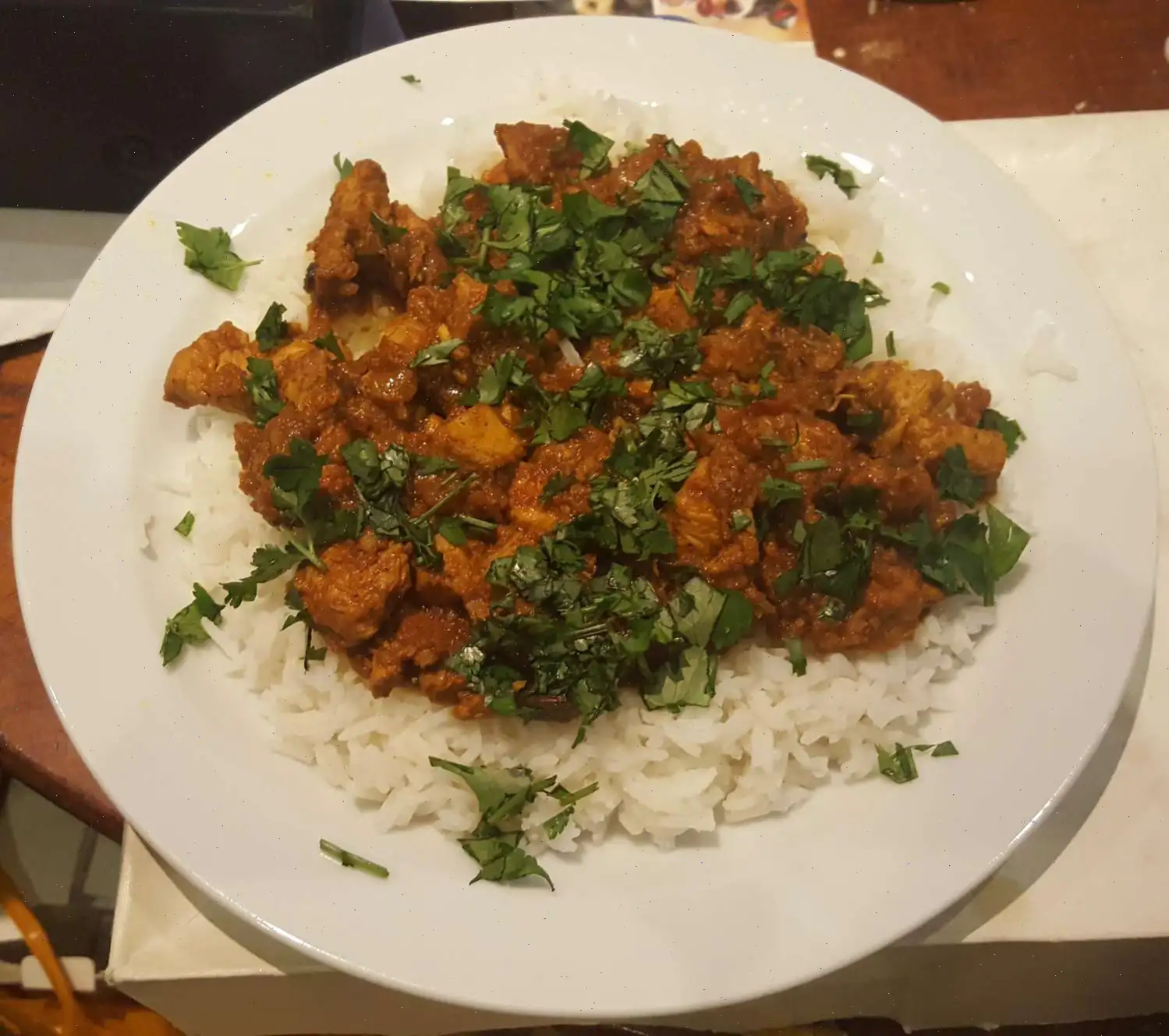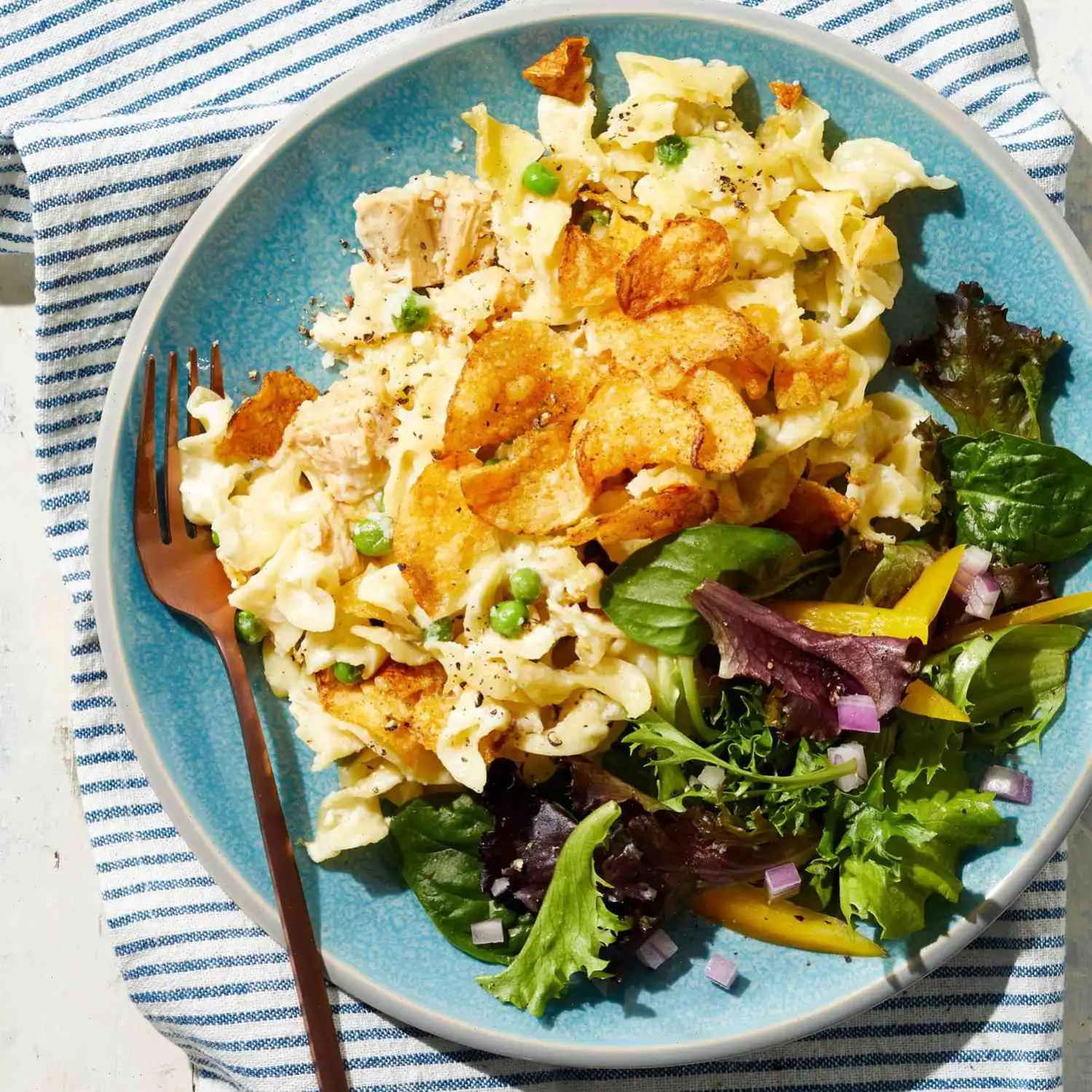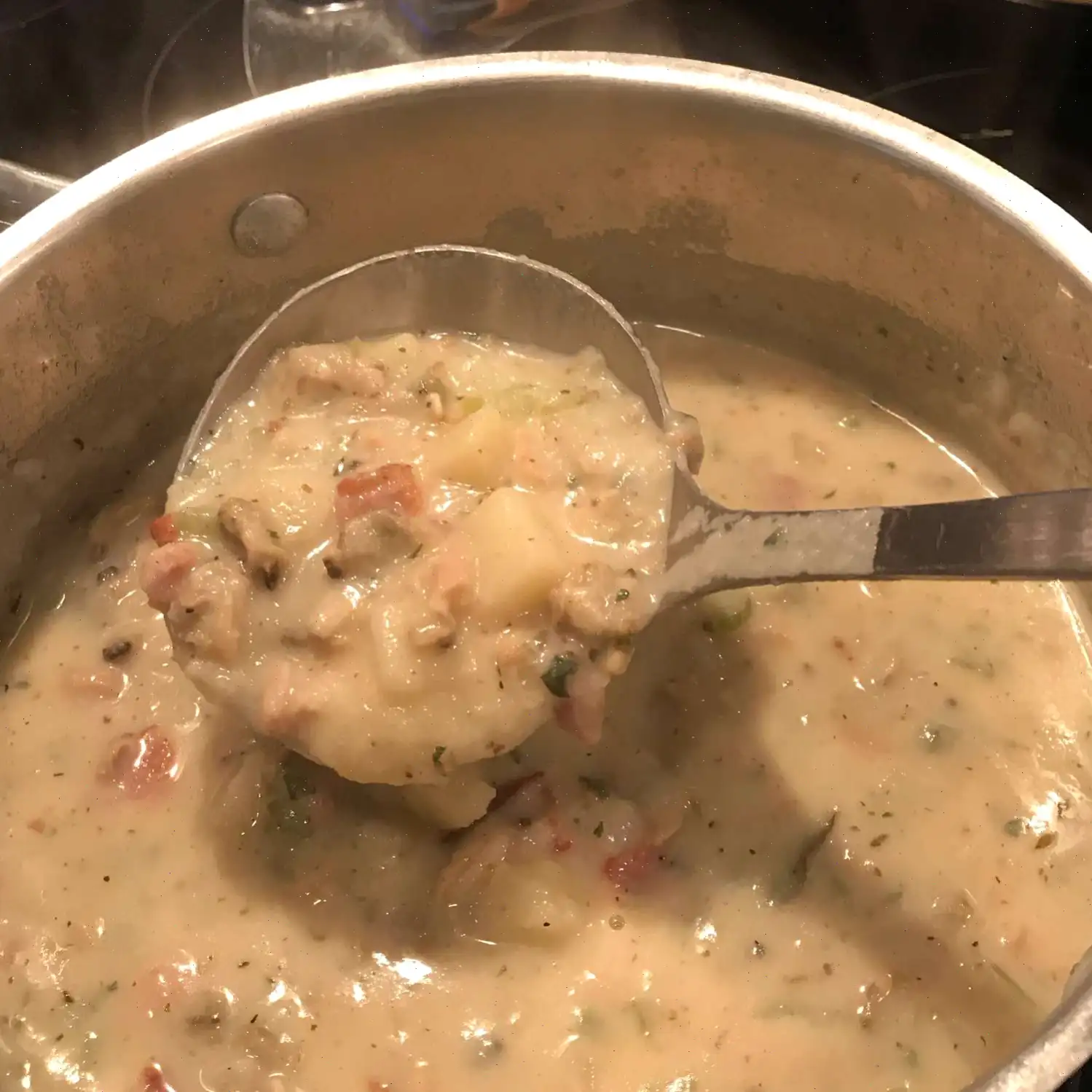
Chicken Madras Recipe
Chicken Curry Recipe
This recipe serves 4 and is perfect for those who love bold, flavorful dishes with a kick! The rich spices combine to create a mouthwatering curry, with tender chicken and a fragrant sauce. Let's get cooking!
Ingredients
- 5 tablespoons cooking oil
- 3 whole cloves
- 2 cardamom pods
- 2 large onions, finely chopped
- 3 green chile peppers, with seeds, chopped
- 4 cloves garlic, crushed
- 1 (1 inch) piece ginger, minced
- 1 teaspoon ground red chili pepper (or to taste)
- 1 teaspoon ground turmeric
- teaspoon ground cumin
- teaspoon ground coriander
- Salt to taste
- 1 pounds skinless, boneless chicken breasts, cut into bite-sized pieces
- cup water
- (14 ounce) can tomato puree
- 1 teaspoon ground nutmeg
- 1 teaspoon garam masala
- cup chopped fresh cilantro (or more to taste)
Directions
- Heat the oil in a large nonstick pan over medium heat. Add the cloves and cardamom pods, allowing them to sizzle for about 1 minute.
- Add the chopped onions to the pan and saut for 7 to 10 minutes, or until they turn dark brown.
- Introduce the chopped chile peppers, crushed garlic, and minced ginger to the pan. Cook and stir for about 30 seconds, until fragrant.
- Stir in the ground red chili pepper, turmeric, cumin, coriander, and salt. Cook, stirring frequently, for another minute, allowing the spices to blend well.
- Add the chicken pieces and water, stirring constantly until the water is fully incorporated into the mixture, about 2 to 3 minutes.
- Stir in the tomato puree and ground nutmeg. Cover the pan and cook for about 20 minutes, or until the chicken is no longer pink in the center and the juices run clear.
- Once the chicken is cooked, ladle the curry into bowls, sprinkle with garam masala, and garnish with fresh cilantro.
Nutrition Facts (per serving)
| Calories | 423 |
|---|---|
| Total Fat | 22g |
| Saturated Fat | 4g |
| Cholesterol | 97mg |
| Sodium | 335mg |
| Total Carbohydrate | 18g |
| Dietary Fiber | 4g |
| Total Sugars | 8g |
| Protein | 38g |
| Vitamin C | 96mg |
| Calcium | 75mg |
| Iron | 4mg |
| Potassium | 824mg |

Chicken Madras is a beloved dish in Indian cuisine, known for its rich, spicy flavors and aromatic blend of spices. Its a staple in Indian curry dishes, featuring chicken simmered in a vibrant sauce with tomatoes, onions, and a variety of spices. This dish is not only delicious but also tells a story of regional influences and historical migrations that have shaped Indian culinary traditions.
History and Origins of Chicken Madras
Chicken Madras, like many popular dishes in Indian cuisine, finds its roots in the rich and diverse history of South India. Its name originates from the city of Madras (now Chennai), a major port city on the southeastern coast of India. Madras has long been known for its spicy food, influenced by the various spices traded through the region. The dish is thought to have evolved from the southern Indian cooking traditions, incorporating local ingredients like tamarind, coconut, and curry leaves. However, the Madras curry itself is a blend of spices that combines both South and North Indian influences, creating a versatile and aromatic curry.
Regional Variations
While Chicken Madras is often associated with the southern part of India, the dish is popular across the country and has been adapted in different regions. The version served in South India often features tamarind for a tangy kick, whereas in other areas of India, the heat comes primarily from the combination of red chili and black pepper. In addition to variations in the heat level, some regional recipes may include a coconut milk base or other local ingredients, making each version unique to its place of origin.
How Does Chicken Madras Differ From Similar Dishes?
Chicken Madras stands out from other chicken curry dishes like Chicken Tikka Masala or Chicken Korma due to its intense heat and tangy flavor profile. Unlike Chicken Tikka Masala, which is a creamy curry with a mild tomato base, Chicken Madras is typically spicier and less creamy. The inclusion of ground spices like cumin, coriander, and garam masala gives it a distinctly complex flavor that is bold and satisfying. The use of chili peppers and sometimes tamarind also differentiates it from milder curries like Chicken Korma, which has a sweeter, more subtle flavor.
Where Is Chicken Madras Traditionally Served?
Chicken Madras is a popular choice in Indian restaurants, both in India and around the world. In India, it's typically served as a main course alongside rice or Indian bread like naan or roti. Its a dish that often appears on the menus of curry houses and is a go-to for those who enjoy a dish with a good amount of spice and heat. In the UK, Chicken Madras is a frequent option in Indian takeaways, where it has become a favorite for those looking for a spicy curry.
Interesting Facts About Chicken Madras
- Despite its fiery reputation, Chicken Madras can be adjusted to suit different spice tolerances by varying the amount of chili pepper used in the recipe.
- The use of cardamom and cloves in Chicken Madras is a nod to the influence of Mughal cuisine, which introduced rich spices to Indian curries during the 16th century.
- Chicken Madras is sometimes referred to as "Madras Curry" in the West, but in India, it's just known as "Chicken Curry" with variations depending on region.
- The dish is popular in the UK, where it is often served in Indian restaurants as part of the "Indian takeaway" culture. In fact, the "Madras" curry is one of the most requested curry dishes outside of India.
- Although Chicken Madras is known for its heat, it also has a well-balanced flavor profile with a mix of savory, spicy, and slightly sweet elements from the tomato base.
Whether you enjoy it mild or with extra heat, Chicken Madras offers a deep, flavorful experience that represents the complexity and beauty of Indian cuisine. Its a dish that connects the past with the present, bringing centuries of culinary tradition into every bite.
FAQ about Chicken Madras Recipe
Comments
Sarah Martinez
01/13/2024 08:16:53 AM
This dish was absolutely delicious! It struck the perfect balance of flavors. We've already cooked it twice and it has secured a spot on our list of favorite recipes!








